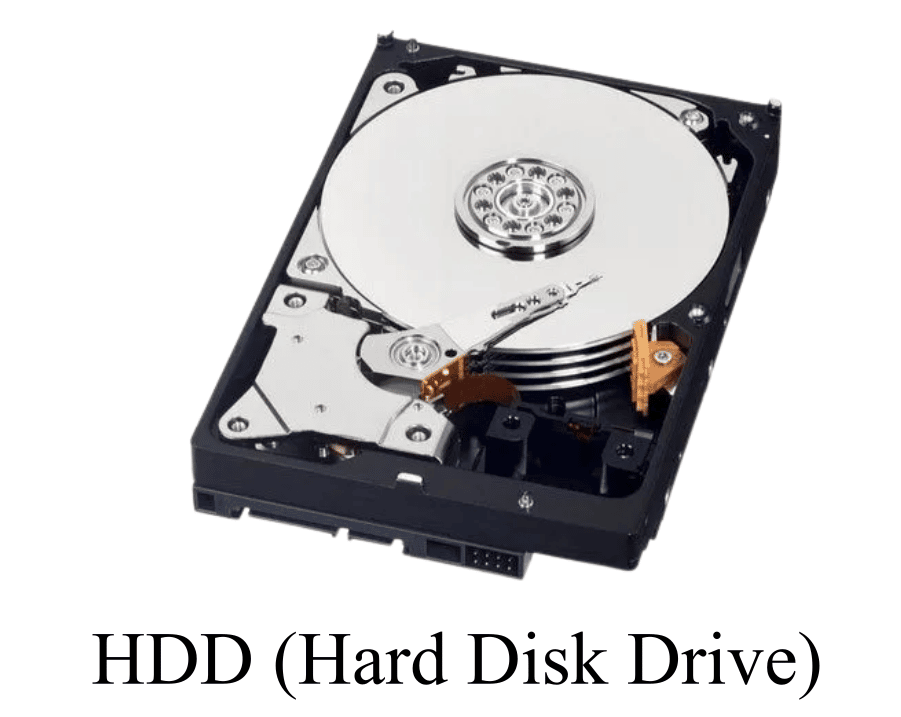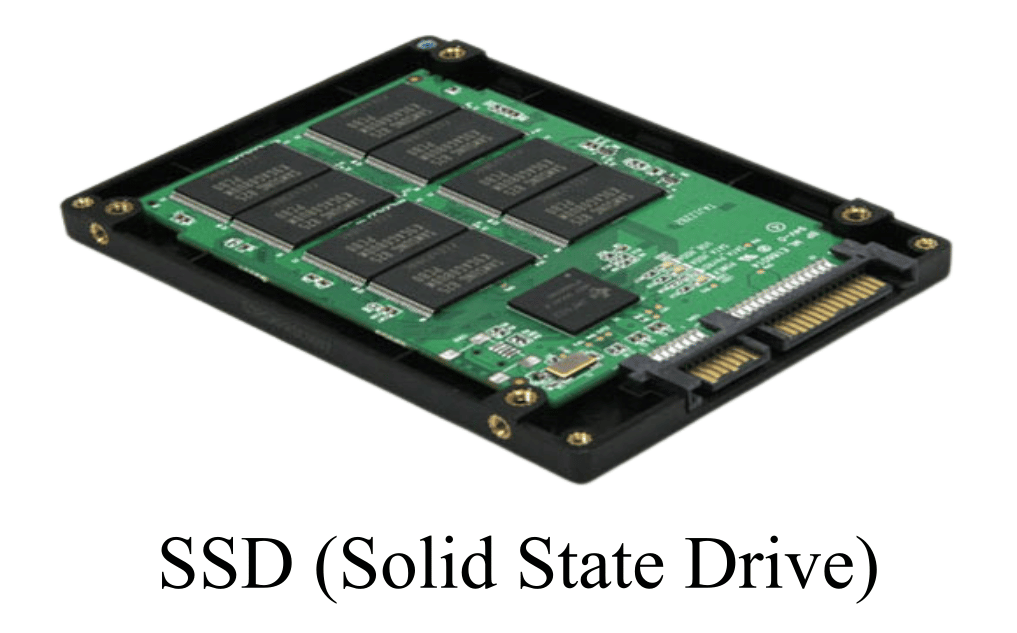In this article, we shall discuss the important differences between HDD and SSD. But before that let us first know a bit about the basics of HDD and SSD individually.
Both HDD and SSD are secondary storage devices used in computers to store data and information permanently. But, technologies and construction wise both are absolutely different from each other. The fundamental difference between HDD and SSD is that HDD is a magnetic storage device, while SSD is a semiconductor storage device.
What is HDD?

HDD stands for Hard Disk Drive. HDD or Hard Disk Drive is a type of secondary storage device used in most computers over the world. An HDD is composed of aluminum discs called platters. The surface of the platters is coated with a thin layer of magnetic material. These discs are rotated with the help of a small electric motor. A magnetic reader arm is equipped inside the HDD to read and write the data. This magnetic reader arm consists of a read/write head that can float above the discs to access data. HDDs are generally made in two standard sizes, i.e. 2.5 inches for laptop computers and 3.5 inches for desktop computers.
What is SSD?

SSD stands for Solid State Drive. SSD is a semiconductor secondary storage device. The fundamental technology used to manufacture SSD is the same as that used for the manufacture of Pen Drives and other semiconductor memories. Since SSD is a solid-state drive, hence it does not have moving parts that increase its lifespan. SSD consists of memory cells in the form of integrated circuits. Also, SSDs have higher read/write speeds as compared to HDDs. Another major advantage of SSDs is that they can be made in several sizes making them suitable for small devices. Modern computers are using SSD in place of HDD which makes them more reliable and faster.
Now, let us discuss the differences between HDD and SSD in more detail.
Difference between SSD and HDD
The key differences between HDD and SSD are listed in the following table-
| Key | HDD | SSD |
| Full Form | HDD stands for Hard Disc Drive. | SSD stands for Solid State Drive. |
| Storage Type | HDD uses magnetic storage. | SSD uses semiconductor storage. |
| Components | The main components of HDD are platters (discs), spindle, electric motor, magnetic reader arm, and electronic circuit board. | The main components of SSD are semiconductor memory cells and electronic circuit boards. |
| Moving Parts | HDD has moving parts like discs, spindles, motors, etc. | SSD has no moving parts. |
| Size | HDD is larger in size. HDD generally comes in two standard sizes 2.5 inches for laptops, and 3.5 for desktops. | SSD are compact in size. |
| Speed | The read/write speed of HDD is slow. | The read-write speed of SSD is faster. |
| Cost | HDDs are comparatively less expensive. | SSDs are relatively more expensive. |
| Storage Capacity | HDDs are available in large storage sizes of the order of terabytes due to less price. | SSDs are available in much smaller storage sizes due to the high price. |
| Durability | HDDs are less durable due to moving components. | SSDs are more durable as they do have no moving parts. |
| Reliability | HDDs are less reliable. | SSDs are more reliable. |
| Susceptible to physical damages | HDDs are more susceptible to physical damage due to mechanical components. | SSDs are less susceptible to physical damage due to the absence of mechanical parts. |
| Noise | Moving parts present inside HDD create noise when in use. | SSDs do not make noise due to the absence of moving parts. |
| Power Consumption | HDD consumes more power. | SSD consumes less power. |
Conclusion
Hence, this is all about the important differences between SSD and HDD. In conclusion, we can state that the HDD and SSD both are secondary storage devices. From the above comparison, we can state the most significant difference between HDD and SSD which is, HDD is a magnetic storage device composed of several moving parts, and on the other hand SSD is a solid state memory that does not have any moving part.